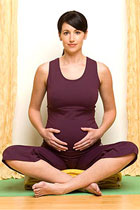OUR TOP TRENDING APPS
Yoga is derived from the word yoke which means union or joining. Hence, Yoga is literally the joining together of the finite self and the infinite self. The finite self is defined as the actual physical body and the experiences that we have physically. Everyone can relate to the physical body because it is a real entity that can be seen and touched. Infinite self is the inner self- the higher self-the spiritual self.
The word Yoga automatically calls to mind Sage "Patanjali" the founder and father of Yoga. He lived around three centuries before Christ, and was a great philosopher and grammarian. He was also a physician and a medical work is attributed to him. However this work is now lost in the pages of time. His best known work is Patanjali Yoga Sutras of Aphorisms on Yoga. The path outlined is called Raja Yoga or the sovereign path. It is so called because of the regal, noble method by which the self is united with the overself. Patanjali's Yoga has essentially to do with the mind and its modifications. It deals with the training of the mind to achieve oneness with the Universe. Incidental to this objective are the acquisition of siddhis or powers. The aim of Patanjali Yoga is to set man free from the cage of matter. Mind is the highest form of matter and man freed from this dragnet of Chinta or Ahankara (mind or ego) becomes a pure being
The mind or Chinta is said to operate at two levels-intellectual and emotional. Both these levels of operation must be removed and a dispassionate outlook replace them. Constant Vichara (enquiry) and Viveka (discrimination between the pleasant and the good) are the two means to slay the ego enmeshed in the intellect and emotions. Vairagya or dispassion is said to free one from the pain of opposites love and hate, pleasure and pain, honour and ignominy, happiness and sorrow.
The easiest path to reach this state of dispassion and undisturbed tranquillity is the path of Bhakti or love. Here, man surrenders his all-mind, soul, ego-to the Divine Being and is only led on by the Divine will. Self-surrender the Diving Name. Such repetition must not be mechanical but one-pointed and full of favor. For this, concentration is necessary. concentration can be there only if man has practiced to fix his attention on a particular object without letting it dwell on anything else.
Concentration also calls for regulation of conduct if Bhakti must develop. Good cheer, compassion, absence of jealousy, complacence towards the virtuous and consideration towards the wicked must be consciously cultivated.
There are also methods of regulated breathing which help reach concentration.
Yoga is an art and takes into purview the mind, the body and the soul of the man in its aim of reaching Divinity. The body must be purified and strengthened through various practices. The mind must be cleansed of all gross and the soul should turn inwards if a man should become a yogic adept. Study purifies the mind and surrender takes the soul towards God.
The human mind is subject to certain weaknesses which are universal. avidya-wrong notions of the external world, asmita-wrong notions of the external world, asmita-wrong notions of oneself, raga-longing and attachment for sensory objects and affections, dweshad is like and hatred for objects and persons, and abinivesha or the love of life are the five defects of the mind that must be removed. Constant meditation and introspection eradicate these mental flaws.
The human body is a vehicle for journeying this life. It must be kept in proper form if the mind should function well. For this, there are practices too, but Patanjali does not elucidate on them.
The Yoga of Patanjali is Ashtanga or comprised of 8 limbs.
They are :
1. Yama
2. Niyama
3. Asana
4. Pranayama
5. Pratyashara
6. Dharana
7. Dhyana
8. Samadhi.
Ahimsa (non-injury), Satya (truth), Asteya (non-covetousness), Brahmacharya (continence) and Aparagriha (abstinence from avarice) come under Yama.
These five austerities are universal and absolute. Under no condition should they be deviated from. A Yogi must not cause injury or pain to another in thought, word or deed, One must not hurt even in self-defence. This is Ahimsa.

Truth is concurrence between thought, word and deed. it must be true to fact and at the same time pleasant. If by speaking the truth, another is hurt it ceases to be truth and becomes himsa. There is a story which illustrates this point. In olden days there was a sage renowned for his austerities and observance of the vow of truth. It so happened that once when he was sitting by his little hut, a frightened man with a bundle ran past him and disappeared into a cave nearby. a couple of minutes later there came a band of fierce robbers with gleaming knives, apparently looking for this man. Knowing that the sage would not lie, they asked him where the man with the bundle was hiding. At once, the sage, true to his vow of not uttering falsehood, showed them the cave/ The cruel robbers rushed into it, dragged out the scared man, killed him mercilessly and departed with his bundle. the sage never realised God in spite of his austerities and tenacity for truth for he had been instrumental in the murder of a man. This is not the kind of truth that yoga requires. It would have been better if the sage had remained quiet for that would have saved the poor man. Great care is therefore to be exercised in speaking and each word must be carefully weighed before it is uttered. Yoga shows us all happiness is within our selves and trying to quench desires is like pouring ghee on fire which only makes it blaze more instead of putting it out. So with desire, It is never satisfied. yoga shows us that happiness for which we are eternally searching can be obtained through non-desire. To achieve a state of non-desire, the mind must be trained to think clearly. A healthy mind requires a healthy body. This is where Hatha Yoga comes in!!

Yoga,as we have already seen,is the process of attaining self-relation.However,we are concerned solely with Hatha Yoga with its object of purifying the body. Hatha is derived from Ha meaning the Sun and Ta meaning the Moon.Yoga is derived from the Sanskrit term 'Yug' which means "yoke"or' unite'.The two terms together denote the unification of the Sun and the Moon or the union of the Prana and Apana Vayus.This is a physical process regulating the inflow of breath in the two nostrils.But we must always remember that the purpose of Yoga,of any kind,is the evolution of the soul.
Hatha Yoga as known to us today is drawn mostly from Gheranda Samhita and Hathayoga pradipika.These two works seem to be from the same source since many lines from each repeat in the other. ;
Hatha Yoga can be divided into 7 heads:
1. Bodily purification
2. Asanas
3. Mudras
4. Pratyahara
5. Pranayama
6. Dhyana
7. Samadhi
Anyone above 14 years of age can do Yogasanas.Sick people may also do them.Pregnant women must discontinue the practice after the 3rd month.Women must refrain from practice during the 4 days of menstruation each month.People suffering from heart disease must be careful and take up yogic practices only under expert supervision.Generally too,these asanas are best learnt from an able and competent teacher.
Asanas are best performed in the morning on an empty stomach.Where time does not permit they can be done in the evening,but not permit they can be done in the evening,but at least 3 hours should elapse after the last meal.Regular practice at the same place and time gives good results soon.
Diet must also be regulated.Vegetarians can carry on with their usual food but excessively spicy,oily and rich foods should be reduced gradually,and wherever possible eliminated.Meat,eggs,fish are to be avoided.So also hard drinks.Freshly cooked food,fresh vegetables,plenty of fruits and greens and milk are the best foods for practitioners of Yoga subject,of course,to one's resources.Canned,refined and processed foods are best avoided since they can cause faulty elimination.
If Hatha Yoga is faithfully practiced,benefits will start showing in the form of a youthful face and figure,graceful posture and carriage,clear complexion,improved blood circulation and all-round general health.
The practice of Yoga not only works the physical body by keeping it fit while strengthening and elongating the muscles, it also helps the nervous and circulatory systems by purifying and balancing them. Yoga provides the skills necessary to connect mind, body, and soul. In today's world we are brought up with how to deal with the external world, but most rarely touch base on the inner world. Yoga will teach you how your body works, how to breathe properly, and how to use all of these techniques for your own benefit. This will enable you to understand and relate the mind and body together instead of separately. Yoga provides you with the tools necessary to quiet the mind so that you can access the natural state of oneness.
In the past, traditional healers used Yoga postures as a method for healing emotional disorders and illnesses. As a result of regular practice, many benefits will occur. This includes greater endurance, flexibility, deeper breathing, and an overall improvement in mood and emotional well-being.
The practice of Asanas promotes flexibility of the muscles and strength in the bones and tissues. It also massages the organs, brings balance to different internal and glandular functions, promotes the flow of vital energy, prana (also known as qi in Chinese, or ki in Japanese),and balances the physical and metaphysical parts of the body (koshas).
Asanas are techniques that promote awareness, concentration, meditation, and relaxation through the physical body. As the practice becomes more regular, there are significant results. Such results include good mental and physical health through stretching, massage and the stimulation of the energy channels of the internal organs.
Our bodies have a tendency to build up and accumulate poisons like uric acid and calcium crystals, just to mention a few. The accumulation of these poisons manifests in diseases and makes our bodies stiff. A regular Yoga practice can cleanse the tissues through muscle stretching and massaging of the internal organs. This brings the waste back into circulation so that the lungs, intestines, kidneys, and skin are able to remove toxins in a natural way.
Scientific studies have shown that the practice of Yoga has curative abilities and can prevent disease by promoting energy and health. That is why more and more professionals have started using Yoga techniques in patients with different mental and physical symptoms, such as psycho-somatic stresses and different diseases
How to do it: Always do it on an EMPTY STOMACH. Sit in easy pose with the hands on the knees.
Breath: Inhale through the mouth making a beak with the mouth and inhale as much air as you can into the stomach. Inhale in short, continuous sips. Then apply neck lock and hold the air in. Roll the stomach to the left until you have reach half of the length of the time you are able to hold the breath in, then reverse the direction for the other half of the remaining time. When you can’t hold the air any longer straighten the spine and exhale SLOWLY through the nose.
Benefits: This exercise adjusts the acid balance in the stomach, but it must be done daily without missing a day.
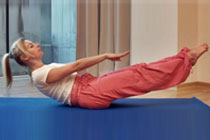
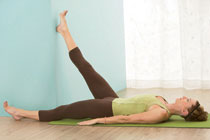

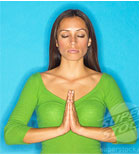
How to do it: These exercise need to be done standing up. Place the hands in pray pose with the side of the thumbs touching the sternum. Hold the position for 2-3 minutes with long deep breathing.
yoga_for_eye
Benefits: It works on the eyesight. It clears the pharynx. It aids concentration. It strengthens the will power. It works on the intellect. Improves memory and mental fatigue.
Lie on the back. Place the right hand under the neck. Bring the left arm over the head. Place the left leg over the right. Keep the knees straight. Hold for 5 minutes, and then repeat to the other side.
This position holds pressure under the uterus, and the navel point. You will never have a heart attack. You can repeat this up to 4 times in an hour.
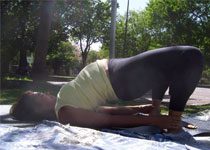
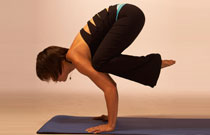
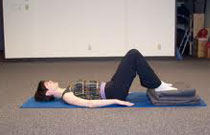

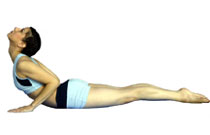
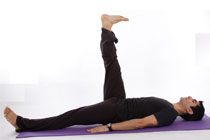
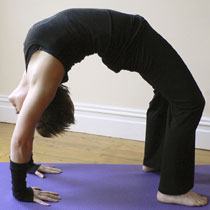
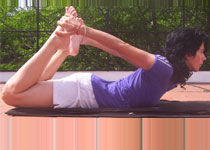
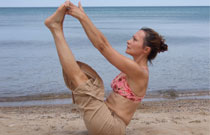
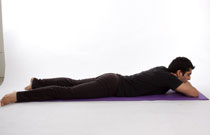
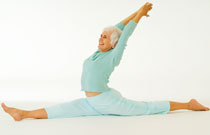

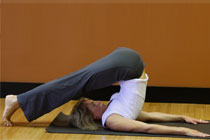
The asanas are poses mainly for health and strength.There are innumerable asanas, but not all of them are really necessary. Practice each pose starting with a few seconds in the beginning and gradually increase the period to 15 minutes an more.
These poses are so designed by the ancient sages who discovered them,that enable one to sit in the same pose for hours together at a stretch steadily and without jerks.This steady posture enables one to attain one-pointedness of mind.
Padmasana is the famous lotus-pose commonly known as the Buddha pose.Siddhasana is another pose generally used for meditation.
Practice each pose starting with a few seconds in the beginning and gradually increase the period to 15 minutes an more.
The following points are important while practising asanas:
(1) Always do asanas in a well-lit, clean and ventilated room.If you are one of those lucky few who can di it in the open in the privacy of your compound or terrace, so much the better.As far as possible, close the door of your room so that you are left undisturbed by people walking in and out of it.
(2) Wear minimum clothing, preferably cotton so that it dose not interfere with breathing and perspiration.Discard all tightfitting under-garments like corsets, belts and brassiers. Remove all footwear.
(3) Do the asanas on a blanket folded twice spread over a carper.Use a bed-sheet over the blanket so that the woolen fibers do not stick to your lips or nose when you have to do the asanas that require you to lie on your stomach.It should not be too soft nor too hard.
(4) Tie your hair simply.Remove all pins and broaches and if you wear a bun , make sure it dose not protrude unduly as to come in the way of your lying flat on the carpet.
(5) Always perform asanas early in the morning.If this is possible,the next best time would be evening around dusk.
(6) Never do asanas on a full stomach immediately after a meal.
Some of the asanas are mentioned below:
Easy pose is one of the most commonly used of the sitting poses. This is done by sitting on the buttocks, crossing the legs, and keeping the spine straight. It doesn’t matter which leg you choose to place underneath the other.
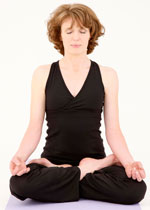
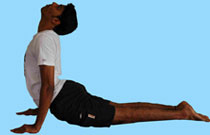
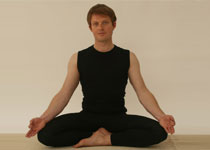
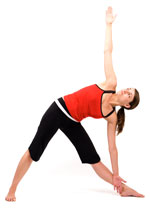
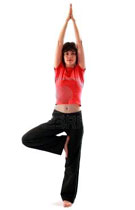
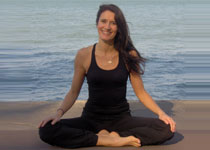
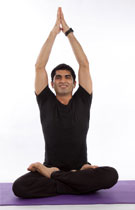
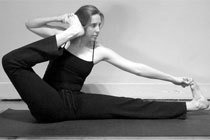

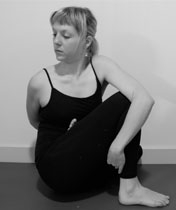
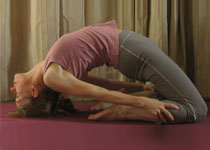
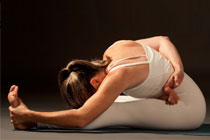
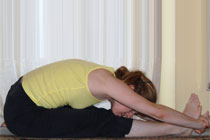

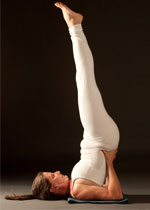
There are many articles, books, and lectures that teach on the practice of meditation. Yet most people do not understand exactly how to achieve a real state of meditation. In this article, we are going to discuss in detail the principal steps involved in meditation, along with some tips to help you in the process. There are many different aspects which need to be considered about meditation similar to the many aspects of Yoga. These include such features as breathing, control of the senses, concentration, and mantras. There is also a mental process such as how eating, sex, and sleep affect your meditation. Also, it is important to learn the best time and place to meditate, as well as sitting positions. There is a myth that when you sit down you should be able to quiet the mind. We have thousands of thoughts per wink of the eye. When you bring the focus inwards, you become aware of the mental chaos of your mind. Distractions are the rule because the mind never stops. Through meditation you can create stillness and calmness which can serve you for a lifetime.
The best place to meditate should be a quiet place in the house where there are no people passing by. It could be a room or small corner, but should be ventilated. The temperature of the room shouldn't be too cool or too hot, and the room shouldn't be too bright either.
You may want to make your meditative experience more special by adding some candles, photos of a person or deity that inspires you, incense, and other inspirational items. You can also play some relaxing music. All of this is nice but not necessary.
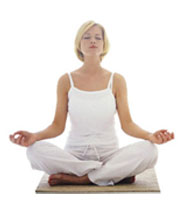
Meditating for:
3 MINUTES Increases blood circulation. This distributes the neuroendocrine secretions throughout the body.
7 MINUTES Brain frequency waves start shifting from Beta waves to Alpha (calming) waves and can continue even into deep
relaxation Delta waves. At the same time the electromagnetic field around the body increases in strength.
11 MINUTES The sympathetic and parasympathetic parts of the brain become balanced and produce energy.
22 MINUTES Anxiety-producing thoughts in the subconscious start to clear.
31 MINUTES Total balance in the endocrinological system is achieved. This effect will last the whole day and is reflected in changes in mood and behavior.
Meditation Benefits
There are numerous benefits associated with the practice of meditation. Here are some just to name a few:
• Mediation creates a metabolic state deeper than that which occurs during sleep.
• Meditation reduces blood lactate, a symptom of stress.
• Meditation increases calming hormones like melatonin and serotonin, while decreasing cortisol.
• Meditation improves short vision, hearing, and blood pressure, which can all be impacted by aging.
• Long term meditators have 80% fewer heart-related diseases, and have a 50% less chance to develop cancer.
• Meditators release DHEA, a youth-related hormone.
• 75% of insomniacs were able to sleep normally when practicing meditation and 25% were improved.
• 34% of chronic pain was decreased in patients when practicing meditation.
• Patients with AIDS and cancer experienced decreased symptoms.
• Pre-menstrual syndrome symptoms decreased by 57%
• Anxiety and depression were reduced significantly.
• The use of medical care and hospitalization was reduced.
• Post-traumatic stress syndrome improved.
Yoga has also recently attracted a large group of pregnant women. It has been proved that Yoga increases their energy, and rids their bodies of the pain and nausea commonly associated with pregnancy. Unlike some workouts, Yoga should never harm the body or cause it pain. Practicing Yoga is a healthy way to stay fit during the ninth month of pregnancy. Breathing techniques and meditation used in Yoga are beneficial during labor.
During a woman’s pregnancy, the body changes dramatically. Yoga can help women to welcome these changes, and take the time to live in the “now” of pregnancy, rather than feeling as if pregnancy is a waiting period before birth. Meditation calms the mind and reduces negative thoughts of one about oneself, and others around them, thus improving the Yogis mental health.
Although yoga can improve a woman's health during pregnancy, there are Yoga postures that should not be performed, specifically when they call for the woman to lie on her stomach. Yoga during pregnancy, should be performed under the instruction of a video or Yoga teacher. These experienced Yogis can direct you to poses that reduce pain and swelling of the lower body, and correct the issues that weight gain presents to a woman’s posture. Specific postures, such as squats, can better prepare the body for childbirth. As a woman’s pregnancy progresses, her joints will loosen (some women even require a larger size of shoes!), but Yoga allows the strengthening and flexibility of these joints.
